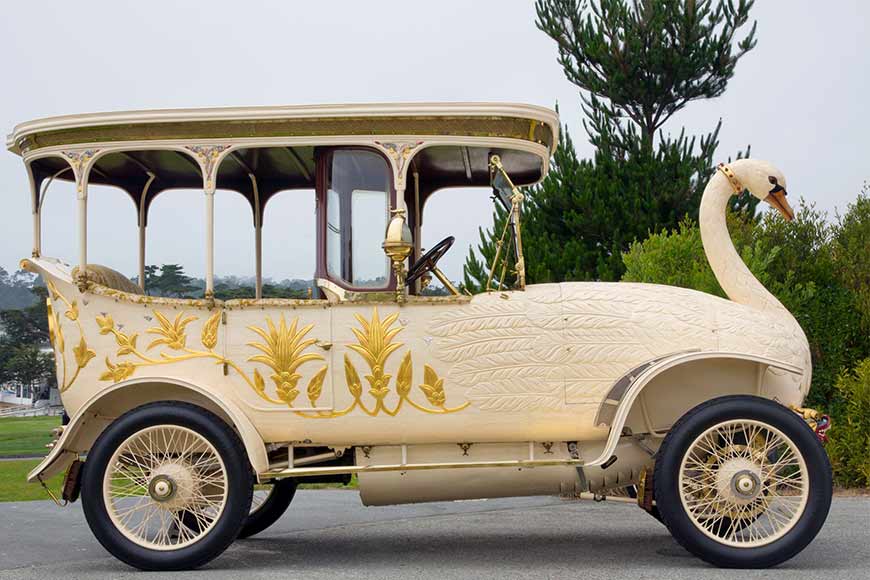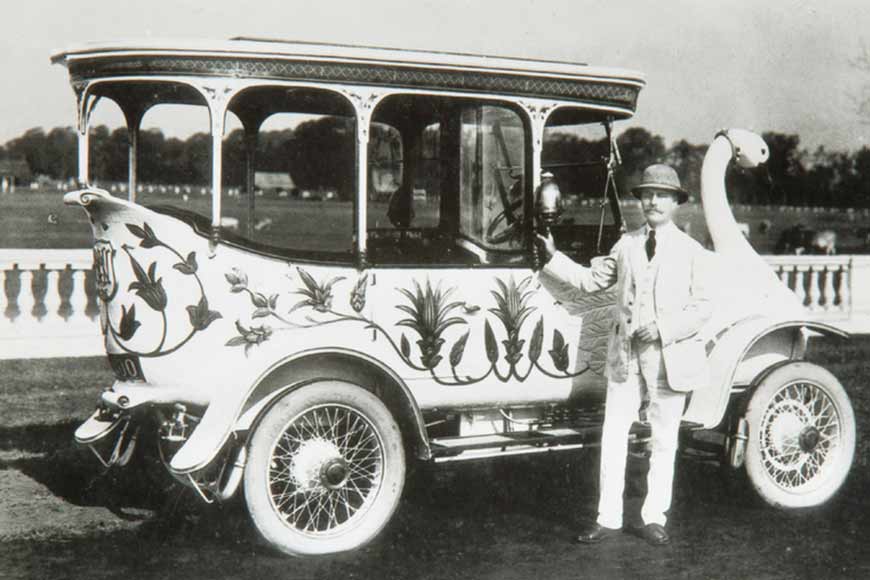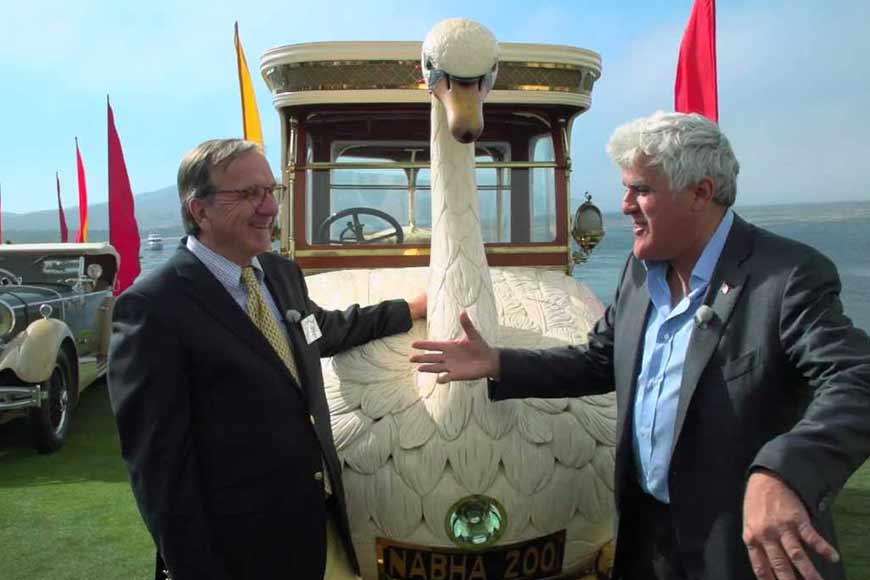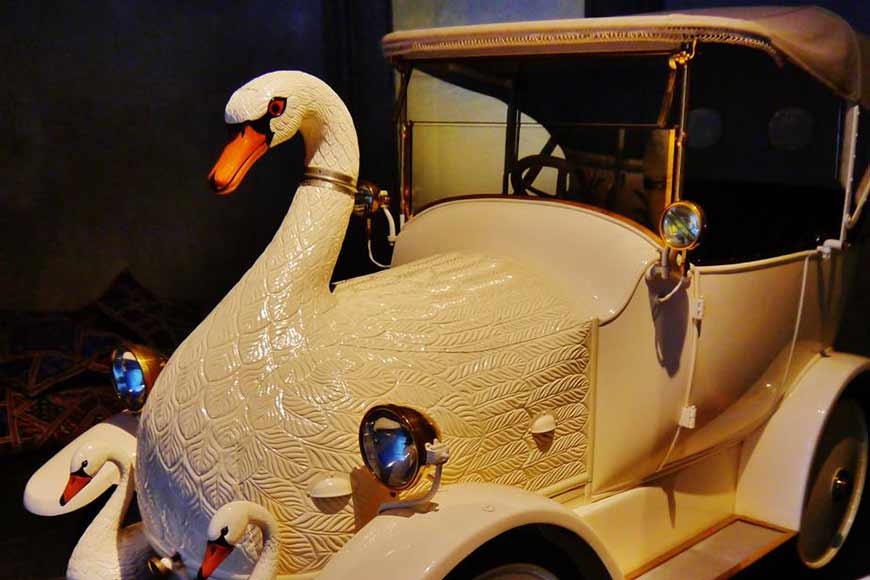When Brooke’s Swan Cars cruised through the crowded streets of Kolkata

It really looks extraordinary. The Brooke Swan Car that once upon a time drove down the crowded streets of Calcutta. It was the creation of eccentric and wealthy Scotsman Robert Nicholl or ‘Scotty’ Matthewson and he lived in early 20th century Calcutta, that was then the capital of British India. His Calcutta mansion was called ‘Swan Park’.

But why did he build such a car? He purposely did it to shock the locals and ruling elites with his car in a city that was buzzing with wealth making activities. And he certainly succeeded in doing so. Matthewson travelled all the way to London and placed an order for a car in 1909 with JW Brooke & Company of Lowestoft, Suffolk. In an era of awesomely expensive coach-built cars, a Brooke was more than thrice the cost of a Rolls Royce.
Matthewson travelled all the way to London and placed an order for a car in 1909 with JW Brooke & Company of Lowestoft, Suffolk. In an era of awesomely expensive coach-built cars, a Brooke was more than thrice the cost of a Rolls Royce.
The bodywork represented a swan gliding through water. Its wooden body was apparently built by Savage of Kings Lynn, Britain’s most famous maker of steam-powered fairground rides. The swan’s head and body, carved to create the effect of feathers that concealed the radiator and bonnet. The rear was decorated with a lotus flower design finished in gold leaf, an ancient symbol for divine wisdom. Apart from the normal lights, there were electric bulbs in the swan’s eyes that used to glow eerily in the dark. The car had an exhaust-driven, eight-tone Gabriel horn that could be operated by means of a keyboard at the back of the car. It had amber eyes that glowed eerily in the dark, a multi-note Gabriel exhaust horn with a keyboard in the rear of the car so that Scotty could play chords and bugle calls, and a hot water spray in the swan’s beak that enabled the chauffeur to clear a passage through Calcutta’s crowded streets.
It was in the fashionable Maidan, where Calcutta’s elite promenaded in their carriages and cars every afternoon, that Scotty displayed the Swan Car’s most outrageous feature. It caused a sensation. Matthewson would take the car for a drive to Maidan and there the car had a special duct that would discharge the whitewash on the road to make it look like Swan droppings. The special duct was used to discharge gold eggs. Matthewson apparently had fun with the Swan Car in Calcutta’s fashionable Maidan Park.
 Interestingly, a ship’s telegraph was used to issue commands to the driver. Brushes were fitted to sweep off the elephant dung collected by the tyres. The swan’s beak was linked to the engine’s cooling system and opened wide to allow the driver to spray steam to clear a passage in the streets. Whitewash could be dumped onto the road through a valve at the back of the car to make the swan appear even more lifelike. The car first arrived in Calcutta in 1910.
Interestingly, a ship’s telegraph was used to issue commands to the driver. Brushes were fitted to sweep off the elephant dung collected by the tyres. The swan’s beak was linked to the engine’s cooling system and opened wide to allow the driver to spray steam to clear a passage in the streets. Whitewash could be dumped onto the road through a valve at the back of the car to make the swan appear even more lifelike. The car first arrived in Calcutta in 1910.

It was in the fashionable Maidan, where Calcutta’s elite promenaded in their carriages and cars every afternoon, that Scotty displayed the Swan Car’s most outrageous feature. It caused a sensation. Matthewson would take the car for a drive to Maidan and there the car had a special duct that would discharge the whitewash on the road to make it look like Swan droppings. The special duct was used to discharge gold eggs. Matthewson apparently had fun with the Swan Car in Calcutta’s fashionable Maidan Park. Calcutta with its spacious mansions and tree-lined squares inspired the ‘City of Palaces’ sobriquet. Curzon added the Victoria Memorial, built of white Jodhpur marble and paid for by Bengali natives. Yet another palatial edifice, Belvedere in Alipore (now the National Library), recalls Curzon’s dream of ‘a place to which people will resort as they do to the British Museum in London or the Bodleian in Oxford.’ Given his commitment to the city, it is fitting that Raj Bhavan, formerly Government House, completed in 1805 exactly a century before he retired from India, was modelled on his own family home, Kedleston Manor, in Derbyshire.

When the Swan Car was ruled off the streets, it went to the Maharajah of Nabha, who, by 1919, owned two such cars. Maharaja Ripudaman Singh was deposed by the British in 1923 for maladministration, but the car remained. He also made replica of the car called Cygnet. Cygnet may well be the world’s oldest Indian-made automobile, built in the Maharajah of Nabha’s own garages. The Maharajah, by the way, was also the founder of the Vintage Automobile Association of India. The upholstery of the car was commissioned from an Indian weaving mill following the discovery of remnants of the original material under the seats. All the gadgets were made to working order again. In 1993 the Swan won the Montagu Prize at the prestigious Pebble Beach Concours d’Élégance in California.
The fascinating story of Brooke’s Swan Car caught the attention of K Sudhakar Yadav, a Hyderabad-based car designer and fabricator and he set out to create a replica some years ago. Nearly complete, the car is today displayed at a permanent exhibition space.








